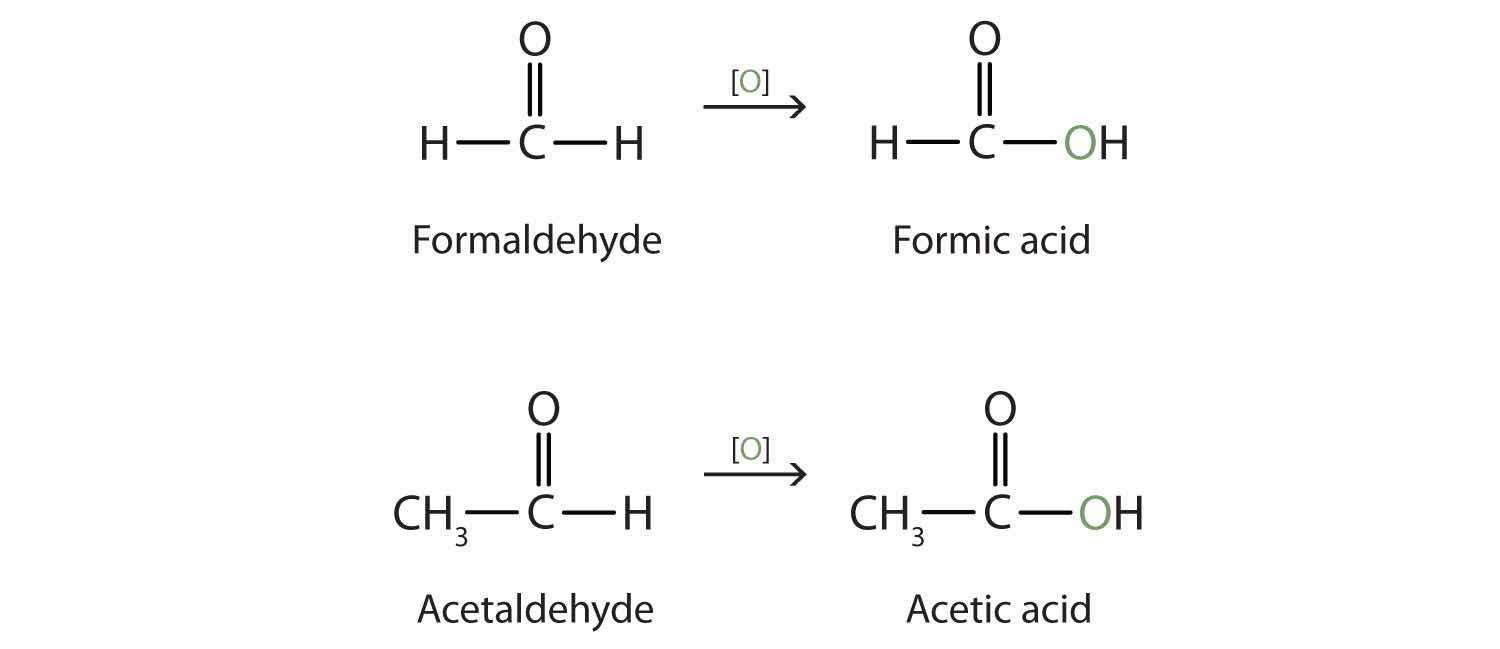The next functional group we consider, the carbonyl groupA compound with an carbon-to-oxygen double bond., has a carbon-to-oxygen double bond.

Carbonyl groups define two related families of organic compounds: the aldehydes and the ketones.
The carbonyl group is ubiquitous in biological compounds. It is found in carbohydrates, fats, proteins, nucleic acids, hormones, and vitamins—organic compounds critical to living systems.
In a ketoneAn organic compound whose molecules have a carbonyl functional group between two hydrocarbon groups., two carbon groups are attached to the carbonyl carbon atom. The following general formulas, in which R represents an alkyl group and Ar stands for an aryl group, represent ketones.

In an aldehydeAn organic compound with a carbonyl functional group that has an hydrogen atom attached and either a hydrocarbon group or a second hydrogen atom., at least one of the attached groups must be a hydrogen atom. The following compounds are aldehydes:

In condensed formulas, we use CHO to identify an aldehyde rather than COH, which might be confused with an alcohol. This follows the general rule that in condensed structural formulas H comes after the atom it is attached to (usually C, N, or O).

The carbon-to-oxygen double bond is not shown but understood to be present.
Because they contain the same functional group, aldehydes and ketones share many common properties, but they still differ enough to warrant their classification into two families.
Both common and International Union of Pure and Applied Chemistry (IUPAC) names are frequently used for aldehydes and ketones, with common names predominating for the lower homologs. The common names of aldehydes are taken from the names of the acids into which the aldehydes can be converted by oxidation. (For more information about carboxylic acids, see Chapter 15 "Organic Acids and Bases and Some of Their Derivatives", Section 15.2 "Carboxylic Acids: Structures and Names" through Section 15.4 "Physical Properties of Carboxylic Acids".)

The stems for the common names of the first four aldehydes are as follows:
Because the carbonyl group in a ketone must be attached to two carbon groups, the simplest ketone has three carbon atoms. It is widely known as acetone, a unique name unrelated to other common names for ketones.

Generally, the common names of ketones consist of the names of the groups attached to the carbonyl group, followed by the word ketone. (Note the similarity to the naming of ethers.) Another name for acetone, then, is dimethyl ketone. The ketone with four carbon atoms is ethyl methyl ketone.

Classify each compound as an aldehyde or a ketone. Give the common name for each ketone.



Solution
Classify each compound as an aldehyde or a ketone. Give the common name for each ketone.



Here are some simple IUPAC rules for naming aldehydes and ketones:
Give the IUPAC name for each compound.



Solution
Give the IUPAC name for each compound.



Draw the structure for each compound.
Solution
The octan- part of the name tells us that the LCC has eight carbon atoms. There is a chlorine (Cl) atom on the seventh carbon atom; numbering from the carbonyl group and counting the carbonyl carbon atom as C1, we place the Cl atom on the seventh carbon atom.

The hexan- part of the name tells us that the LCC has six carbon atoms. The 3 means that the carbonyl carbon atom is C3 in this chain, and the 4 tells us that there is a methyl (CH3) group at C4:

Draw the structure for each compound.
5-bromo-3-iodoheptanal
5-bromo-4-ethyl-2-heptanone
Give the structure and IUPAC name for the compound that has the common name m-bromobenzaldehyde (see Figure 14.6 "Some Interesting Aldehydes" for the structure of benzaldehyde).
Give the IUPAC name for glyceraldehyde, (HOCH2CHOHCHO). (Hint: as a substituent, the OH group is named hydroxy.)

3-bromobenzaldehyde
2,3-dihydroxypropanal
Name each compound.




Name each compound.



Draw the structure for each compound.
Draw the structure for each compound.

